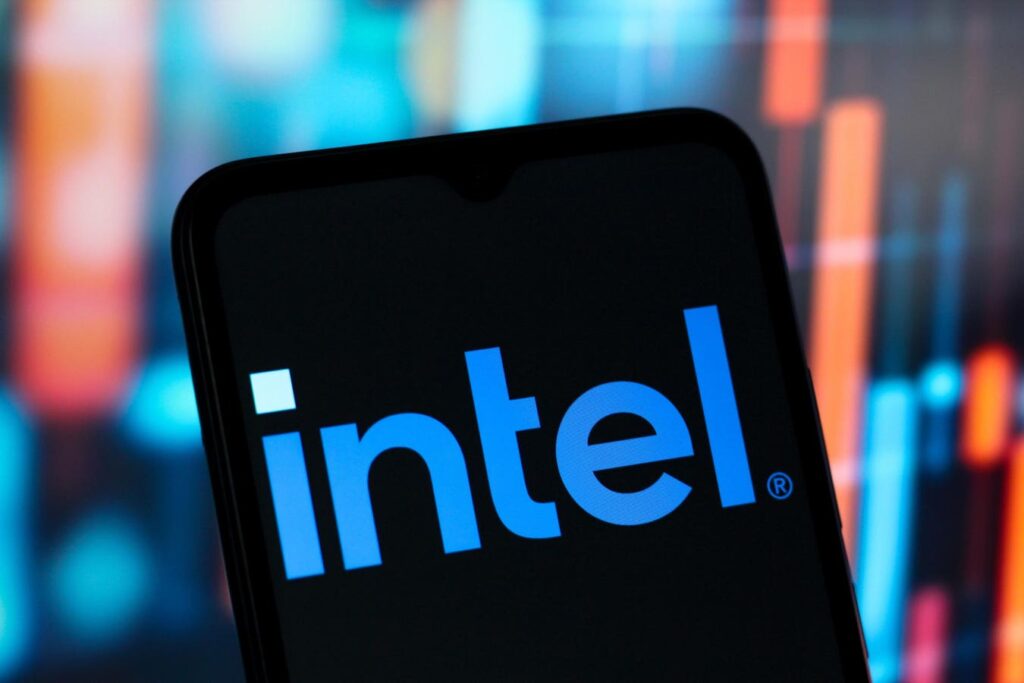Intel (NASDAQ:INTC) stock jumped by nearly 8% during Tuesday’s trading session. While there weren’t many stock-specific factors to justify such a significant move, tech stocks overall have been on an upward trend, driven by positive sentiment regarding the generative artificial intelligence phenomenon. Additionally, U.S. and Chinese officials are currently engaged in trade discussions in London, reportedly touching on export restrictions for various products, including semiconductors and rare earth metals, which may have contributed to the rise in Intel stock. Furthermore, strong fund inflows into technology funds like the Invesco QQQ Trust during the month of May also reflect the favorable outlook for the sector.
Intel’s stock has faced pressure over the past year due to its substantial investments in the foundry sector and a loss of market share in the server and PC spaces to competitors like AMD. Our evaluation of Intel based on essential metrics of Growth, Profitability, Financial Stability, and Downturn Resilience indicates that the company is experiencing poor operating performance, as outlined below. Nevertheless, if you are looking for potential upside with reduced volatility compared to individual stocks, the Trefis High Quality portfolio offers an alternative that has surpassed the S&P 500, yielding returns of over 91% since its launch.
How Does Intel’s Valuation Compare to The S&P 500?
Based on your expenditure per dollar of sales or profit, INTC stock appears inexpensive when contrasted with the broader market.
• Intel possesses a price-to-sales (P/S) ratio of 1.7 versus a figure of 3.0 for the S&P 500
• Moreover, the company’s price-to-free cash flow (P/FCF) ratio stands at 8.6 against 20.5 for S&P 500
How Have Intel’s Revenues Evolved Over Recent Years?
Intel’s Revenues have decreased in the past few years.
• Intel has experienced a decline in its top line at an average rate of 11.2% over the last 3 years (in comparison to a growth of 5.5% for S&P 500)
• Its revenues have dropped by 4.0% from $55 Bil to $53 Bil in the past 12 months (while S&P 500 grew by 5.5%)
• Additionally, its quarterly revenues contracted by 0.4% to $13 Bil in the most recent quarter from $13 Bil a year ago (versus a 4.8% increase for S&P 500)
How Profitable Is Intel?
Intel’s profit margins are significantly worse than most companies in the Trefis coverage universe.
• Intel’s Operating Income for the last four quarters amounted to $-4.1 Bil, reflecting a very poor Operating Margin of -7.8% (in contrast to 13.2% for S&P 500)
• Intel’s Operating Cash Flow (OCF) during this period was $10 Bil, indicating a moderate OCF Margin of 19.5% (against 14.9% for S&P 500)
• For the last four-quarter span, Intel’s Net Income was $-19 Bil, signifying a very poor Net Income Margin of -36.2% (compared to 11.6% for S&P 500)
Is Intel Financially Stable?
Intel’s balance sheet appears to be adequate.
• Intel’s debt stood at $50 Bil at the conclusion of the most recent quarter, while its market capitalization is $96 Bil (as of 6/10/2025). This indicates a poor Debt-to-Equity Ratio of 56.3% (compared to 19.9% for S&P 500). [Note: A low Debt-to-Equity Ratio is preferable]
• Total assets for Intel amount to $192 Bil, with cash (inclusive of cash equivalents) comprising $21 Bil. This results in a strong Cash-to-Assets Ratio of 10.9% (in contrast to 13.8% for S&P 500)
How Resilient Is INTC Stock During A Downturn?
INTC stock has performed worse than the benchmark S&P 500 index during some recent downturns. Concerned about the effects of a market crash on INTC stock? Our dashboard How Low Can Intel Stock Go In A Market Crash? offers a thorough analysis of how the stock reacted during and after prior strong market downturns.
Inflation Shock (2022)
• INTC stock experienced a 63.3% decline from a peak of $68.26 on April 9, 2021, to $25.04 on October 11, 2022, compared to a peak-to-trough drop of 25.4% for the S&P 500
• The stock has not yet returned to its pre-Crisis high
• Since then, the highest point the stock has reached is 50.76 on December 27, 2023, and it currently trades at approximately $22
Covid Pandemic (2020)
• INTC stock declined by 34.8% from a high of $68.47 on January 24, 2020, to $44.61 on March 16, 2020, versus a peak-to-trough decline of 33.9% for the S&P 500
• The stock has not yet returned to its pre-Crisis high
Global Financial Crisis (2008)
• INTC stock saw a decrease of 56.8% from a high of $27.98 on December 6, 2007, to $12.08 on February 23, 2009, compared to a peak-to-trough decline of 56.8% for the S&P 500
• The stock fully recovered to its pre-Crisis peak by March 26, 2012
Putting All The Pieces Together: What It Means For INTC Stock
Currently, Intel’s recent performance has been lackluster, exhibiting inadequate growth and profitability as well as low resilience in downturns. Nonetheless, looking forward, there is potential for improvement. Intel’s foundry operations, previously a weak area, may experience a turnaround within the next two years with the introduction of its advanced 18A process node, already attracting clients such as Amazon and Microsoft. The company is well-positioned to benefit from the administration in power due to its strong U.S. manufacturing footprint, which aligns with anticipated pro-domestic policy shifts. Furthermore, valuation appears reasonable with a lower price-to-sales and price-to-free cash flow ratio relative to the broader market. Additional advantages include the release of new PC/server chips (Lunar Lake, Arrow Lake) and increasing AI involvement through Gaudi accelerators, which could provide further uplift to the struggling stock.
While investing in Intel stock may carry certain risks, the Trefis Reinforced Value (RV) Portfolio has consistently outperformed its all-cap stocks benchmark (a composite of the S&P 500, S&P mid-cap, and Russell 2000 indices) to deliver robust returns for investors. What accounts for this? The quarterly rebalanced mix of large-, mid-, and small-cap RV Portfolio stocks offered an adaptable strategy to capitalize on positive market conditions while minimizing losses during downturns, as described in RV Portfolio performance metrics.
Read the full article here
















